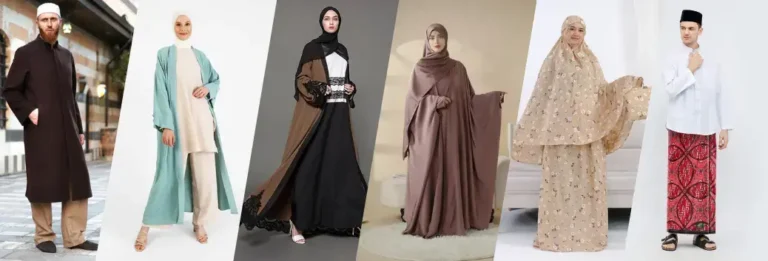Introduction
In the ever-expanding world of modest fashion, halal-certified products have become a critical component for Muslim consumers seeking to balance their religious values with contemporary style. As the demand for modest and ethical fashion increases, halal-certified scarves have gained popularity among fashion-forward Muslims who prioritize faith-based choices. This growing market reflects a broader trend where consumers are more conscious of the origins and ethical standards of their purchases. With Muslims constituting a significant portion of the global population, the halal fashion industry is poised for substantial growth, catering to a diverse clientele seeking both religious compliance and style. The global modest fashion industry is booming, projected to reach $400 billion by 2030, fueled by the growing demand for ethically produced, Sharia-compliant clothing. Among the most sought-after items in this market are scarves, a staple in Muslim women’s wardrobes and a symbol of modesty and personal expression.
In the ever-expanding world of modest fashion, halal-certified products have become a critical component for Muslim consumers seeking to balance their religious values with contemporary style. As the demand for modest and ethical fashion increases, halal-certified scarves have gained popularity among fashion-forward Muslims who prioritize faith-based choices. This growing market reflects a broader trend where consumers are more conscious of the origins and ethical standards of their purchases. With Muslims constituting a significant portion of the global population, the halal fashion industry is poised for substantial growth, catering to a diverse clientele seeking both religious compliance and style. The global modest fashion industry is booming, projected to reach $400 billion by 2030, fueled by the growing demand for ethically produced, Sharia-compliant clothing. Among the most sought-after items in this market are scarves, a staple in Muslim women’s wardrobes and a symbol of modesty and personal expression.
While the term “halal” is commonly associated with food, its application in the fashion industry is equally significant. Halal principles in fashion ensure that the materials and processes used in manufacturing are free from substances that are considered impure or forbidden in Islam, such as certain animal products or unethical labor practices. This means that halal-certified scarves are made using fabrics dyed with non-toxic, permissible dyes and are often produced in facilities that adhere to fair trade practices. This commitment to ethical production not only aligns with Islamic values but also appeals to consumers who are increasingly mindful of sustainability and social responsibility in their purchasing decisions. Halal in fashion ensures that the products are permissible under Islamic law, encompassing every aspect from material sourcing to manufacturing processes. For scarves, this means using ethically sourced fabrics, avoiding non-halal animal derivatives, and ensuring that production methods align with Islamic principles of cleanliness, fairness, and sustainability. The rising interest in halal-certified scarves reflects not only a commitment to religious obligations but also a broader shift towards ethical consumerism.
This article delves into the importance of halal-certified scarves in Islamic fashion, exploring their role in upholding Sharia compliance, meeting consumer expectations, and fostering sustainability and ethical practices in the fashion industry. It is important for brands, as well as consumers, to know why halal certification is important, so that they can contribute to the development of a modest fashion ecosystem that respects both faith and global ethical principles.
What Does Halal Mean in Islamic Fashion?
The concept of “halal” originates from Islamic principle, where it refers to what is permissible and lawful under Sharia law. In Islamic fashion, “halal” means that the clothing adheres to ethically produced. This ensuring that garments are made without exploiting workers or using prohibited materials. The aim is to align fashion choices with Islamic values and principles. In the context of fashion, halal extends beyond modesty in design to include the ethical and lawful sourcing of materials and manufacturing processes. For scarves, a cornerstone of Muslim women’s modest wear, this means ensuring that every step—from fabric selection to the final product—complies with Islamic principles. Scarves hold great significance in Islamic attire as they serve as a symbol of modesty and religious identity. They are often used to cover the hair and neck, in adherence to the Islamic principle of hijab, which encourages modest dressing. Beyond their religious connotations, scarves also allow for personal expression through various styles, colors, and patterns, all while maintaining the values of modesty and respect.
Halal in fashion also emphasizes cleanliness and purity. For instance, scarves made from fabrics treated with non-halal substances, such as non-permissible animal-derived chemicals materials, would not be considered halal. Ethical sourcing is crucial in halal fashion because it ensures that the garments are produced in a manner that respects both human rights and Islamic values. This means that workers involved in manufacturing are treated fairly, paid just wages, and work under safe conditions, reflecting the principles of justice and compassion central to Islam. Additionally, ethical sourcing helps prevent environmental harm, aligning with the Islamic tenet of stewardship over the Earth. Further to this, Islam’s principles of justice and fairness require that fair labor practices be observed, as well as that all workers involved in the scarf production process be treated with respect and dignity
Key Aspects of Halal Certification for Scarves
The production of halal-certified scarves is a highly meticulous and regulated process that guarantees compliance with Islamic principles while delivering superior quality. Halal certification assures consumers that every step of the production process aligns with ethical, religious, and quality standards. This commitment is especially important in the global market, where demand for halal-certified fashion is growing exponentially. Let’s explore the comprehensive journey of crafting halal-compliant scarves, from the initial design to final delivery, while ensuring the highest standards of quality and adherence to Islamic values.
Design and Development: The Foundation of Halal Compliance
The process of producing a halal-certified scarf begins with the design phase, which plays a crucial role in determining the final product’s aesthetics and compliance. Designers conceptualize the scarf’s style, pattern, and color palette, ensuring that all elements adhere to Islamic guidelines. Haram imagery, such as depictions of devils or inappropriate content, is strictly avoided. Instead, the focus is on creating elegant, modest designs that align with halal principles. Patterns for knitted or woven scarves are meticulously crafted, and suitable fabrics such as silk, cotton, wool, and acrylic are carefully selected for their quality and halal compatibility.
Fabric selection is a pivotal step. The raw materials must not only meet halal standards but also ensure the durability, comfort, and luxury expected in premium scarves. To achieve this, experienced professionals with a discerning eye for excellence rigorously assess and select fibers. Their expertise ensures that only the finest and most compliant materials are used, setting the foundation for a high-quality product.
Pretreatment: Preparing the Fabric for Printing
Once the fabric materials are chosen, the fabric undergoes a critical pretreatment process. This step involves immersing the fabric in a bath to prepare it for printing. The bath enhances ink absorption, ensuring that the colors remain vivid and adhere well to the fabric. Additionally, a clear protective primer is applied to optimize the fabric’s surface for ink adhesion, a step essential for producing vibrant and long-lasting colors. All chemicals used in this stage must be halal-certified, free from any haram components such as non-halal animal derivatives ink & chemicals.
After the bath, the fabric is stretched to its final width using a stenter frame and then rolled up for storage or immediate use in the printing phase. This preparation ensures that the fabric is perfectly primed for the intricate designs that will soon adorn it.
Printing: Bringing Designs to Life
The printing process is the heart of scarf production, where creativity meets technical precision. Various printing methods are employed depending on the design complexity, fabric type, and production scale:
Screen Printing
Ideal for simple designs, this method uses a mesh screen to transfer ink onto the fabric. is a process where ink is forced through a mesh screen onto a surface. Making certain areas of the screen impervious to printing ink creates a stencil, which blocks the printing ink from passing through the screen
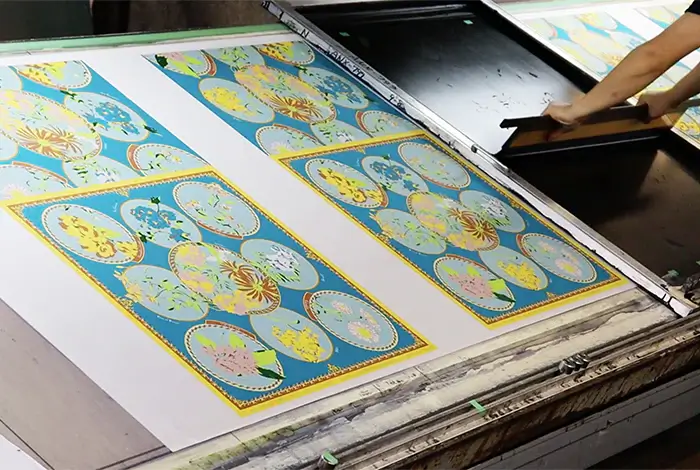
Rotary Screen Printing
Rotary screen printing is a continuous method of printing in which a perforated cylindrical screen applies a colorant made from either pigment or dye. The colorant is forced from the interior of the cylindrical screen and onto the fabric. Suitable for large-scale production,
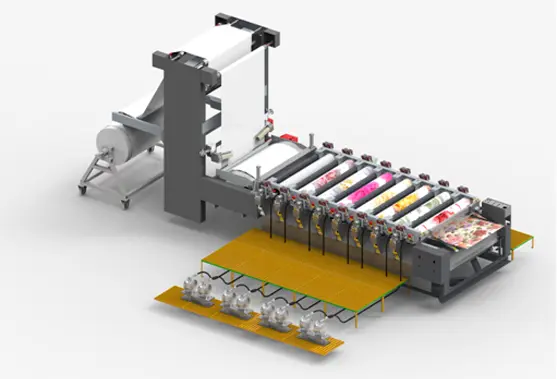
Digital Printing
Ideal for simple designs, this method uses a mesh screen to transfer ink onto the fabric. is a process where ink is forced through a mesh screen onto a surface. Making certain areas of the screen impervious to printing ink creates a stencil, which blocks the printing ink from passing through the screen
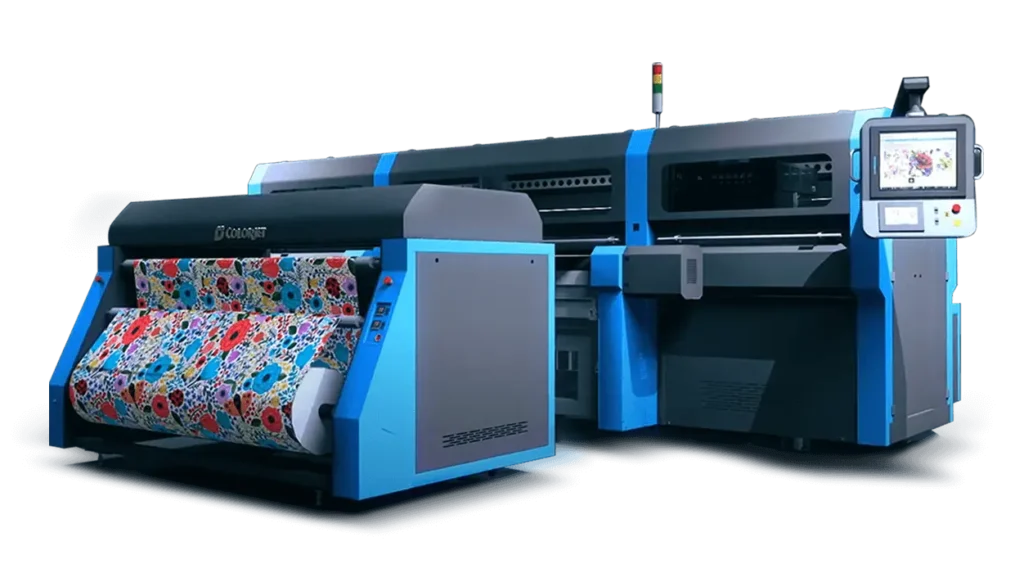
Heat Transfer Printing
Heat transfer printing is a method of transferring a design onto a material using heat and pressure. It’s a versatile technique that can be used to decorate scarf and other materials Uses heat to turn ink into a gas that permeates the material and binds to its fibers. This method is often used on synthetic fabrics and produces vibrant, long-lasting print
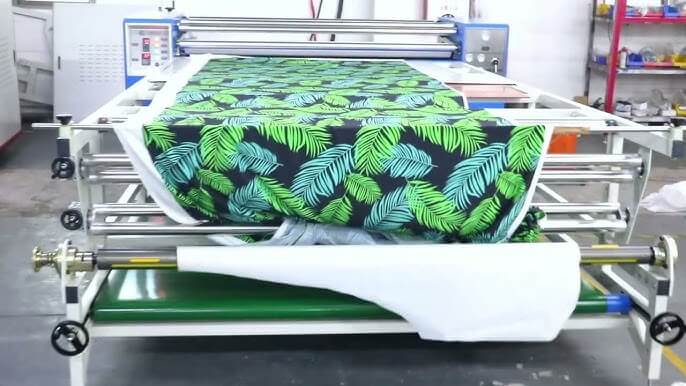
Each method requires careful consideration of design intricacy, fabric compatibility, and budget constraints, ensuring the final product aligns with halal principles
Post-Printing Treatment: Enhancing Durability and Quality
Once the designs are printed, the fabric undergoes a series of post-printing treatments to enhance its durability and visual appeal. The first step is steaming, which sets the colors and brings out their vibrancy. This is followed by heat-fixing at approximately 150°C, ensuring that the colors are permanently bonded to the fabric. Excess ink and residues are then washed out, purifying the material and significantly improving color fastness.
The fabric is then subjected to finishing processes, including a final bath and stretching, to achieve its desired shape and texture. Rigorous quality control is conducted at this stage, with every meter of fabric meticulously inspected to ensure it meets the highest standards of halal compliance and quality.
Confection: Crafting the Final Product
In the confection phase, the treated fabric is transformed into finished scarves. Precision cutting techniques, such as the use of heated iron wire, ensure clean, crisp edges with minimal fraying. The edges are then finished with either hand-rolled hems for a luxurious touch or machine stitching for a modern alternative. Each scarf is professionally ironed to eliminate creases and highlight the fabric’s quality and texture.
Thorough inspections are conducted on every scarf to minimize defects and ensure compliance with both quality and halal standards. Customizable inner packaging and sturdy outer cartons are used to protect the scarves during transportation, ensuring they reach customers in pristine condition.
The Importance of Halal Compliance in Scarf Production
Halal compliance is integral at every stage of scarf production. From the selection of raw materials to the use of halal-certified chemicals, every step is scrutinized to avoid contamination with haram substances. This meticulous attention to detail ensures that the final product meets the spiritual and ethical expectations of halal-conscious consumers.
For manufacturers, adhering to halal principles is not just about meeting religious requirements; it is also a commitment to transparency, sustainability, and excellence. By producing halal-certified scarves, brands can cater to a growing market of consumers who value products that align with their beliefs and lifestyle
Why Halal-Certified Scarves Matter to Muslim Consumers
Halal-certified scarves hold significant importance to Muslim consumers for several reasons. Firstly, for practicing Muslims, Religious values Halal scarves reflects the values and religious norms of Muslims Halal refers to the compliance with Islamic laws and regulations. This certification ensures that the item, in this case, a scarf, is produced in accordance with religious guidelines is designed and made according to Shariah criteria
Muslim consumers, particularly women who wear scarves as a religious obligation, Wearing Halal-certified scarves is essential for many Muslims seeking to comply with Islamic principle. Purity are significant tenets of the faith. Scarves that meet these standards help reflect an individual’s commitment to muslim consumer beliefs. Seek assurance that the product they purchase is Halal. They want to be certain that the material used in the scarf is permitted under Islamic law and does not contain any forbidden substances, such as fork animal derivated chemical. then you know your clothing honors your faith, it can provide peace of mind. This spiritual assurance contributes to a more profound connection to one’s beliefs.
Halal-certified scarves play a crucial role in expressing faith and belonging. They foster a sense of unity within the Muslim community, allowing individuals to showcase their identity proudly. Furthermore, Halal certification guarantees that the scarf was manufactured in a manner that respects Islamic principles. Muslim consumers prioritize the ethical sourcing of products, including the labor conditions and environmental impact during the production process. By choosing Halal-certified scarves, they can be confident that the entire supply chain, from sourcing the fabric to packaging the final product, aligns with their religious values.
Additionally, Halal certification offers a sense of security and trust to Muslim consumers. The presence of a recognized Halal symbol on the scarf provides assurance that the product has been thoroughly inspected and meets the required standards. This allows Muslim consumers to make informed choices when purchasing scarves, eliminating concerns about unknowingly purchasing something that may compromise their religious beliefs.
Moreover, purchasing Halal-certified scarves supports and encourages businesses that comply with Islamic principles. By choosing these scarves, Muslim consumers contribute to the growth of the Halal market, creating a demand for more products adhering to their religious requirements. This, in turn, encourages manufacturers, brands and retailers to invest in Halal certification, not only for scarves but for a wide range of products, catering to the needs and preferences of Muslim consumers.
Halal-certified scarves hold significant importance to Muslim consumers. They provide assurance that the scarves are produced in compliance with Islamic laws and ethical standards, while also offering a sense of trust and security. Choosing Halal-certified scarves supports businesses that align with Islamic principles and contributes to the growth of the Halal market, benefiting Muslim consumers worldwide.
How Brands Can Adopt Halal Certification for Scarves
The world of fashion is constantly evolving, and in recent years, a significant shift has taken place—brands are turning their attention to halal-certified products, particularly in the modest fashion segment. For Muslim consumers, scarves are more than just accessories; they are an essential expression of faith and identity. However, ensuring that these products align with Islamic values goes beyond aesthetics. Partnering with the Fashion Halal Initiative Foundation and implementing the Global Fashion Halal Standard (GFHS) is a transformative step that forward-thinking brands are taking to meet this demand.
The Role of the Fashion Halal Initiative Foundation
At the forefront of halal fashion lies the Fashion Halal Initiative Foundation, is a non-profit organization dedicated to setting and maintaining halal standards in the fashion industry through the Global Fashion Halal Standard (GFHS) to guiding brands in their halal fashion journey. For businesses seeking to cater to Muslim consumers, this partnership provides invaluable expertise in halal compliance. From raw material selection to production processes, the foundation equips brands with the tools to meet the stringent requirements of the GFHS, The Global Fashion Halal Standard (GFHS) sets a new benchmark for halal compliance in the fashion industry. It offers a comprehensive framework that addresses every stage of production, from sourcing to packaging. By implementing GFHS, brands not only ensure that their products meet Islamic guidelines but also build trust and credibility among Muslim consumers. For fashion brands, this is a game-changer. It provides a clear competitive edge in an increasingly discerning market, where halal certification is becoming a key factor in consumer choice.
A Future Built on Ethical Fashion
As the global demand for modest fashion grows, halal-certified scarves represent an opportunity for brands to stand out in a crowded marketplace. Partnering with the Fashion Halal Initiative Foundation and implementing the Global Fashion Halal Standard is more than just a business decision—it’s a commitment to integrity, quality, and respect for Islamic values. For brands ready to embrace this transformation, the journey to halal certification is a step toward building a future rooted in ethical and sustainable fashion.
Ready to make the change? Your brand could be the next to lead the charge in halal-certified fashion, setting new standards for innovation and trust.



